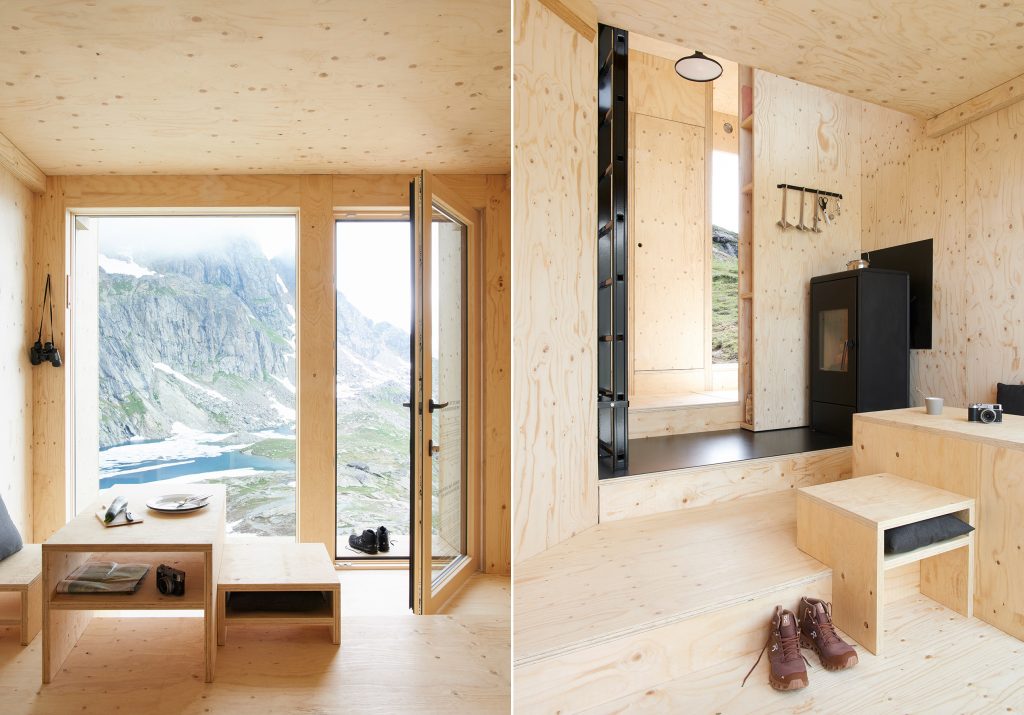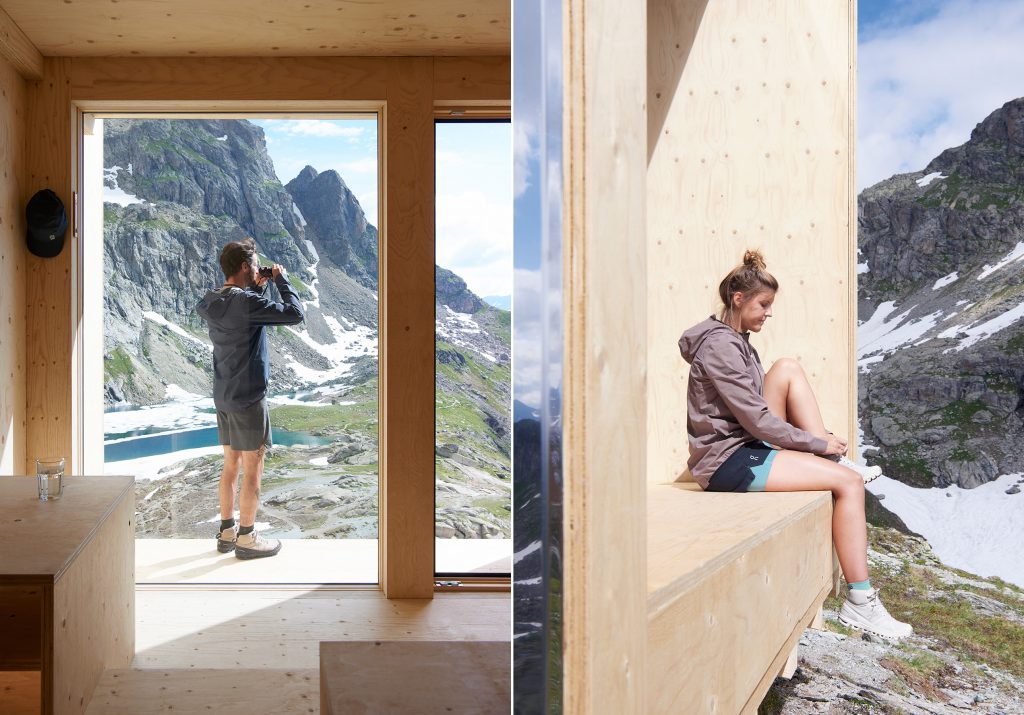Swiss Running Brand On’s Sustainable Mountain Hut
A temporary, self-contained escape found on the “roof of Europe”

Public art installations in unexpected places are nothing new: 104-year-old Cuban painter Carmen Herrera’s large-scale, monochromatic sculptures just popped up in a downtown NYC park, Sterling Ruby’s fluorescent orange monolith “Spectre” sat within Mount San Jacinto State Park until recently. But Swiss running brand On’s sustainable mountain hut, situated in the Piz Lunghin (also known as “The Roof of Europe”), isn’t an art installation—though it certainly could be confused as one. Rather, it’s a temporary but functional destination for those passing through this part of the Swiss Alps.

It all comes down to yearning for a connection with nature, whether that be in the Engadin Valley or a jog through Central Park. This mountain hut might look spectacular, but its greater purpose is the perspective it gives inhabitants from inside: an almost panoramic view from 8,200 feet up. The intention behind the hut’s construction was to launch the brand’s new outdoor collection back where it all began. After all, it was literally in these hills that co-founders Olivier Bernhard, Caspar Coppetti and David Allemann conceived of the brand nearly a decade ago, and where these new products were tested.

“It’s this tension in our lives that also is reflected in the brand,” Alleman says, adding that the early prototypes are created in nearby in Zurich and then immediately tested here in these mountains. “We’re traveling so much and we’re inspired by our travel and what we see, but then for us it’s also an opportunity to go back to the source and detox and hike up to the mountain hut and stay there for the night and recharge and digest all the input that you are getting to then create something new.”

The hut itself is a feat of technical design, architected by On’s Head of Design, Thilo Alex Brunner. “Part of the ‘back to the source’ idea is to demonstrate just how few things are needed to have—hopefully—the stay of a lifetime,” he says, adding: “Reduction as ultimate luxury.” Therein lies a parallel to the design of the new Cloudventure series, which favors performance over ostentatious design. Two particular highlights: the lightweight feel and the outsole traction, which render walking sticks practically irrelevant.

As for the hut—which was primarily fashioned from wood and designed to be zero-waste—it was helicoptered up in several pieces and constructed by just a few local builders and On staff. It features a reflective metal facade, solar panels for power, and a unique roof fixture that collects and filters rainwater for use. Having a stove, a dry toilet and shower were design perks that certainly come in handy during an overnight stay.

The most difficult aspect of bringing the hut to life wasn’t the design nor the build, but getting the permission to place it there within nature—especially because politically it belongs to the municipality of Bregaglia in Bergell (part of the Maloja region), but geographically it belongs to the Upper Engadine. Switzerland is known to be restrictive about meddling with nature, so the intention was to create a hut so self-contained that it doesn’t leave any mark after it’s gone. It also meant a multi-step approval process through work with local government and the tourism board. An ambitious undertaking, but not out of character for a brand built on entrepreneurial agility.

“At On, it often happens that an idea is not born out of ulterior commercial motive but out of something that we’re excited to do. That happened with the shoe at the very beginning and then it translated to apparel and then in a conversation with the design team we said, ‘Hey, wouldn’t it be fantastic to have, all summer long, an incredible mountain cabin that’s this beacon, that glows in the sun, and that becomes a little bit of a destination for hikers?’ And then it became all about how to make it happen,” Brunner says.
While temporary, there’s a chance that the hut will be reconstructed next year in Switzerland, perhaps in a different location or possibly the same, according to Alleman. There’s also the possibility of similar construction in other countries—perhaps even the US. Both fall within the MO and DNA of the brand: if it can be dreamt, it can be realized.
Images courtesy of On












